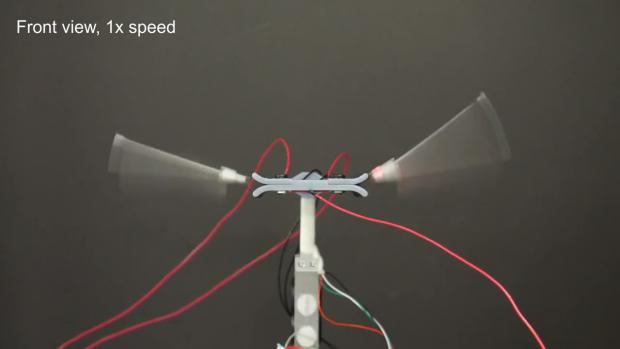
Breaking News
 2 Hours of Retro Sci-Fi Christmas Songs | Atomic-Age Christmas at a Snowy Ski Resort
2 Hours of Retro Sci-Fi Christmas Songs | Atomic-Age Christmas at a Snowy Ski Resort
 Alternative Ways to Buy Farmland
Alternative Ways to Buy Farmland
 LED lights are DEVASTATING our bodies, here's why | Redacted w Clayton Morris
LED lights are DEVASTATING our bodies, here's why | Redacted w Clayton Morris
Top Tech News
 Travel gadget promises to dry and iron your clothes – totally hands-free
Travel gadget promises to dry and iron your clothes – totally hands-free
 Perfect Aircrete, Kitchen Ingredients.
Perfect Aircrete, Kitchen Ingredients.
 Futuristic pixel-raising display lets you feel what's onscreen
Futuristic pixel-raising display lets you feel what's onscreen
 Cutting-Edge Facility Generates Pure Water and Hydrogen Fuel from Seawater for Mere Pennies
Cutting-Edge Facility Generates Pure Water and Hydrogen Fuel from Seawater for Mere Pennies
 This tiny dev board is packed with features for ambitious makers
This tiny dev board is packed with features for ambitious makers
 Scientists Discover Gel to Regrow Tooth Enamel
Scientists Discover Gel to Regrow Tooth Enamel
 Vitamin C and Dandelion Root Killing Cancer Cells -- as Former CDC Director Calls for COVID-19...
Vitamin C and Dandelion Root Killing Cancer Cells -- as Former CDC Director Calls for COVID-19...
 Galactic Brain: US firm plans space-based data centers, power grid to challenge China
Galactic Brain: US firm plans space-based data centers, power grid to challenge China
 A microbial cleanup for glyphosate just earned a patent. Here's why that matters
A microbial cleanup for glyphosate just earned a patent. Here's why that matters
 Japan Breaks Internet Speed Record with 5 Million Times Faster Data Transfer
Japan Breaks Internet Speed Record with 5 Million Times Faster Data Transfer
Causing a buzz: Insect-inspired robot weighs just 0.01lbs and can fly at 1.6mph...

An insect-inspired flying robot with wings that buzz thanks to a new type of electric 'muscle' has been developed by British scientists.
The prototype weighs about 0.01lbs (5g), has a wing span of 5.9 inches (15cm) and can fly at 1.6mph.
It is hoped that one day the robot will be able to look for survivors in disaster zones such as collapsed buildings, monitor hard-to-reach infrastructure and pollinate crops.
Researchers at Bristol University said its wings are so efficient that they actually provide more power than an insect muscle of the same weight.
'It's very challenging to beat nature,' Dr Tim Helps, lead author of the study, told MailOnline.
'If we can produce more power than insect muscle, it means that we can potentially have better performance than an insect — which is really exciting.'
He added: 'It's very challenging because nature does such an amazing job.'
Until now, typical micro flying robots have used motors, gears and other complex transmission systems to achieve the up-and-down motion of the wings.
However, researchers involved in the study said this had added complexity, weight and undesired dynamic effects.
Instead, after taking inspiration from bees and other flying insects, they created an artificial muscle system called the liquid-amplified zipping actuator (Laza), which achieves wing motion using no rotating parts or gears.
The wing itself acts like a negatively charged electrode, while above and below it are two positively charged electrodes.

 $100 SILVER CONFIRMED?
$100 SILVER CONFIRMED?

